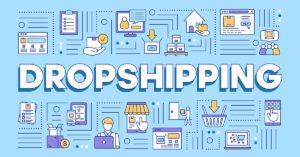
In the tough world of online selling, how you price your products can really make a difference. Let’s check out 12 great ways to set prices that can really boost your online store’s success.
Understanding eCommerce Pricing Strategies:
Setting the right prices is super important for online shops. It doesn’t just impact how much money you make, but also how customers see your store and what they decide to buy. By using smart pricing methods, businesses can get more people to buy from them, sell more stuff, and make their business bigger. So, let’s dive into some pricing strategies to see how they can help your online store succeed!

Moreover, Read this blog: Guide of The Dropshipping Process
Cost-Plus Pricing:
This method is pretty straightforward. You figure out how much it costs to make or buy a product, and then you add some extra money on top to make a profit. It’s like if you make a sandwich and charge a bit more than what it cost you to make it.
Competitive Pricing:
With this strategy, you look at what other stores are charging for similar products. Then, you set your prices based on that. It’s like if you see other sandwich shops selling their sandwiches for $5, so you decide to sell yours for around the same price.
Value-Based Pricing:
Here, you focus on how much value your product gives to customers. If your sandwich has extra tasty ingredients or comes with a free drink, you might charge a bit more for it. Customers are willing to pay more because they see the value in what you offer.
Dynamic Pricing:
This is when you change your prices based on what’s happening in the market. For example, if it’s really hot outside, you might lower the price of your cold drinks to attract more customers. It’s all about adjusting your prices to match demand.
Bundle Pricing:
With bundle pricing, you offer multiple products together as a package deal. It’s like if you sell a sandwich, chips, and a drink together for a lower price than if customers bought them separately. It encourages people to buy more items at once.
Bundle Pricing:
Bundle pricing means selling a bunch of things together for one price. For instance, you might offer a sandwich, chips, and a drink as a combo meal for a better deal than if someone bought each item separately. It’s a way to encourage customers to buy more items at once.
Psychological Pricing:
This strategy plays with customers’ minds to make prices seem more appealing. For example, instead of pricing a sandwich at $10, you might price it at $9.99. Even though it’s just a penny less, it makes the sandwich seem cheaper and more attractive to customers.
Freemium Pricing:
Freemium pricing offers something basic for free but charges for extra features or upgrades. It’s like if you offer a basic sandwich recipe for free but charge for access to premium recipes with special ingredients. It’s a way to attract customers with something free and then upsell them on extra goodies.
Subscription Pricing:
Subscription pricing means charging customers a regular fee for access to your products or services. It’s like if you offer a monthly sandwich club where customers pay a set amount each month to receive a new sandwich recipe or meal kit. It creates a steady stream of income and keeps customers coming back for more.
Penetration Pricing:
Penetration pricing is about setting your prices low to get into the market quickly. It’s like if you offer your sandwiches at a super low price when you first open your store to attract lots of customers. Once you’ve established your brand, you can gradually raise your prices.
Premium Pricing:
Premium pricing means setting your prices higher than your competitors. It’s like if you sell sandwiches made with top-quality ingredients and charge more for them because they’re seen as luxurious or exclusive. It’s a strategy for attracting customers who are willing to pay more for better quality.
Loss-Leader Pricing:
This tactic involves selling a product at a loss or minimal profit to attract customers. It’s like if you sell your sandwiches at a really low price or even give them away for free to get people into your store. Once they’re there, they might buy other items that make up for the loss.

Anchor Pricing:
Anchor pricing involves showing a higher-priced item next to a lower-priced item to make the lower-priced item seem like a better deal. It’s like if you display a fancy sandwich for $15 next to a regular sandwich for $10. The $15 sandwich makes the $10 sandwich seem like a steal in comparison.
Furthermore, Read this blog: How To Start A Dropshipping Business In 6 Simple Steps.
Conclusion:
Great job! Now you know about 12 awesome ways to set prices for your online store and make it grow. By trying out different strategies and seeing what works best for your business, you can sell more stuff and make more money. So, go ahead, give them a try, and watch your sales soar!
Are you ready to use these pricing strategies for your online store? Begin by looking at your market and what your customers want. Then, try out different pricing ideas to see what works best. With patience and smart pricing, you can make your online store even better. Let’s start your journey to e-commerce success!




